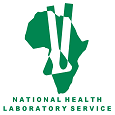| Test: |
Crigler Najjar /Gilbert syndrome |
| Alternate names: |
UGT1A1 |
| Description: |
This gene encodes a UDP-glucuronosyltransferase, an enzyme of the glucuronidation pathway that transforms small lipophilic molecules, such as steroids, bilirubin, hormones, and drugs, into water-soluble, excretable metabolites. This gene is part of a complex locus that encodes several UDP-glucuronosyltransferases. The locus includes thirteen unique alternate first exons followed by four common exons. Four of the alternate first exons are considered pseudogenes. Each of the remaining nine 5' exons may be spliced to the four common exons, resulting in nine proteins with different N-termini and identical C-termini. Each first exon encodes the substrate binding site, and is regulated by its own promoter. The preferred substrate of this enzyme is bilirubin, although it also has moderate activity with simple phenols, flavones, and C18 steroids. Mutations in this gene result in Crigler-Najjar syndromes types I and II and in Gilbert syndrome. |
| Clinical: |
Children with Crigler-Najjar syndrome present soon after birth with severe jaundice, a yellow colouring to the skin.
A build up of bilirubin, the chemical responsible for jaundice, can cause damage to the brain, and this may be apparent in the period soon after birth. This severe, prolonged jaundice is usually the feature that leads to the diagnosis.
|
| Methodology: |
Gene sequencing |
| Turn around time: |
3 months |
| Transit stability: |
|
| Comments: |
|
| Sample: |
Blood EDTA 5 ml |
| Type: |
Genetics |
| Method: |
Gene sequencing |
 |
|
| Consultant/scientist: |
Dr Fierdoz Omar |
| Tel: |
021 404 4118 |
| email: |
fierdoz.omar@uct.ac.za |
 |
|
| Contact for results: |
Ms Surita Meldau |
| Tel: |
021 404 4449 |
| email: |
surita.meldau@uct.ac.za |
 |
|
| Delivery address |
C17 NHLS Labs, NGSH, Observatory, 7925 |
| for samples: |
Cape Town |

